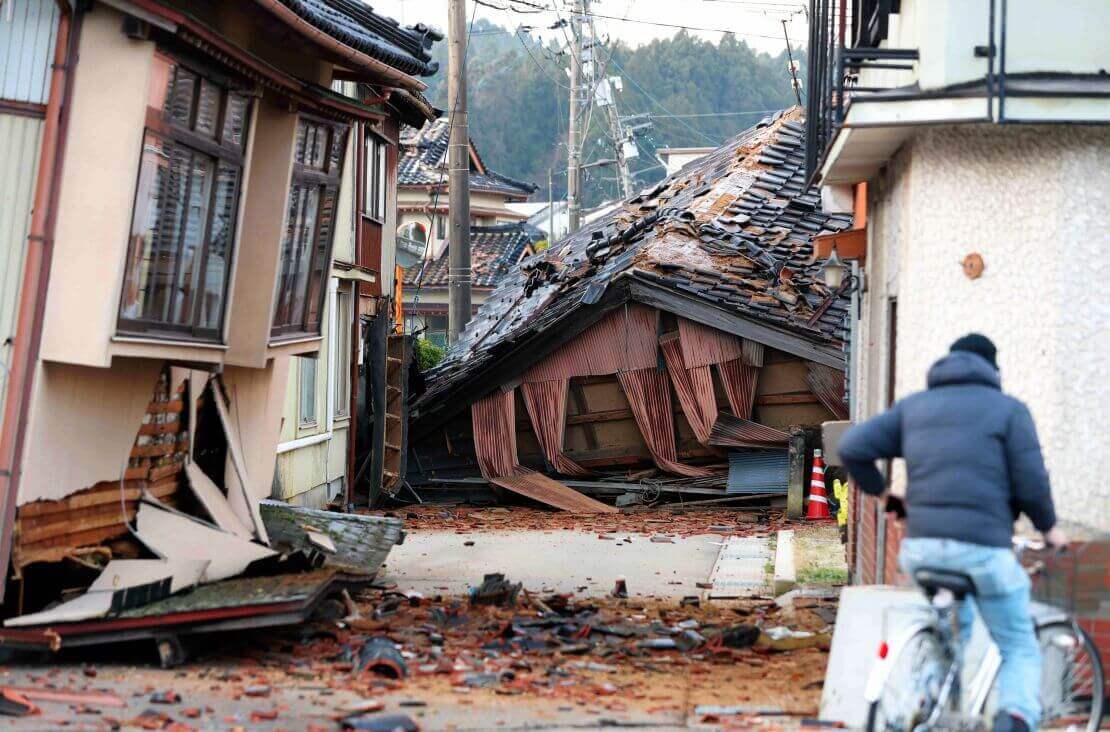At least 48 people have been confirmed killed thus far, after a powerful earthquake struck Japan on New Year’s Day.
The magnitude 7.6 quake struck on Monday afternoon, prompting residents in some coastal areas to flee to higher ground as tsunami waves hit the country’s west coast.
Rescue Efforts
Currently, 1,000 army personnel are involved in rescue efforts, and 10,000 could eventually be deployed. In addition, firefighters and police officers from across the country have been dispatched to the worst-hit area in Ishikawa prefecture.
On Tuesday, rescue teams continued to reach isolated areas where buildings have toppled and roads are wrecked.
However, rescue efforts have been slowed by badly damaged and blocked roads, which have made it difficult for authorities to assess the full extent of the damage.
Japanese PM Fumio Kishida said that rescuers were finding it very challenging to reach the northern tip of the Noto peninsula due to wrecked roads. He added that helicopter surveys had found many fires and widespread damage to buildings and infrastructure.
【総理指示】総理は、地震発生を受け、
— 首相官邸(災害・危機管理情報) (@Kantei_Saigai) January 1, 2024
1.国民に対し、津波や避難等に関する情報提供を適時的確に行うとともに、住民避難等の被害防止の措置を徹底すること。
2.早急に被害状況を把握すること…
“The search and rescue of those impacted by the quake is a battle against time,” Kishida said during an emergency disaster meeting on Tuesday.
Since the quake first hit on Monday, more than 140 tremors have been detected, according to the Japan Meteorological Agency. The agency has warned of the possibility of more strong shocks that could hit in the coming days.
Aftermath
The Japanese government ordered around 100,000 people to evacuate their homes on Monday night, temporarily housing them in sports halls and school gymnasiums.
While many returned to their homes on Tuesday after authorities lifted tsunami warnings, almost 33,000 households remained without power in Ishikawa prefecture early on Tuesday morning after a night of subzero temperatures. Further, most areas in the northern Noto peninsula reportedly have no water supply anymore.

